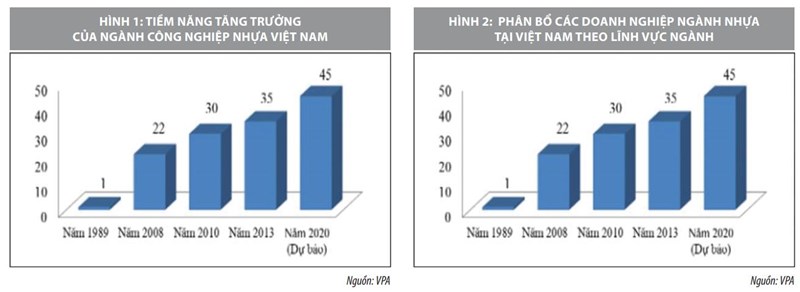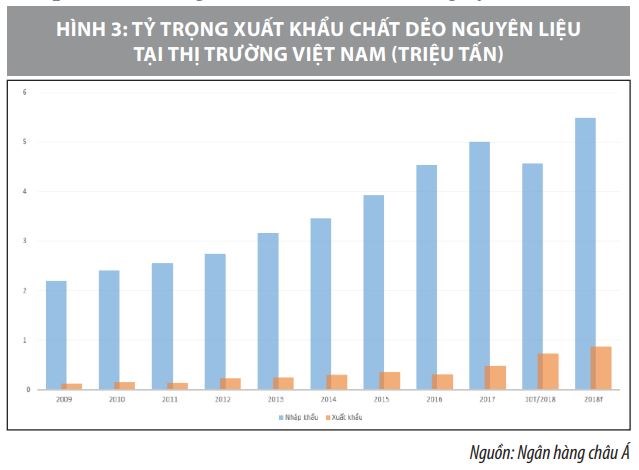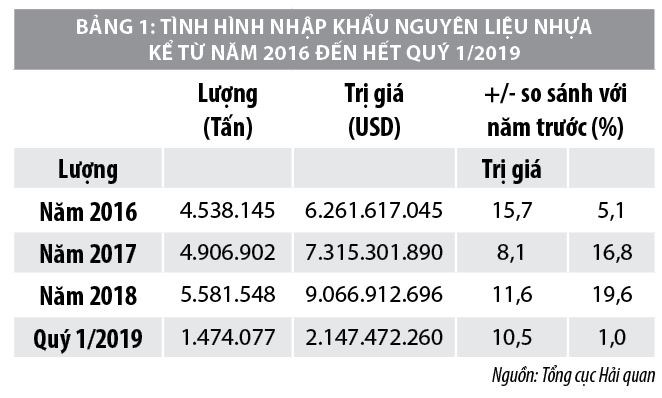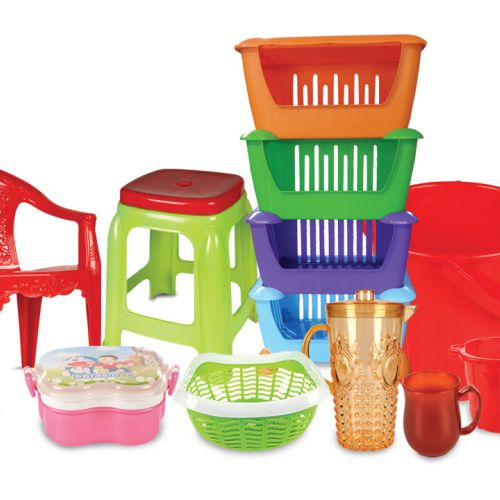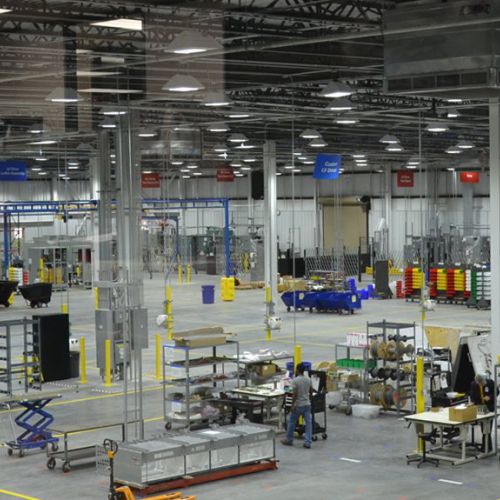In Vietnam, compared to other long-standing industries (such as mechanics, electricity - electronics, chemicals, textiles ...), the plastic industry is quite new. However, in recent years, Vietnam Plastics industry has developed strongly, with an annual growth rate of 16% - 18% / year (only after telecommunications and textiles), there are fast products. growth is nearly 100%. With the rapid development rate, the Plastic industry is considered as a dynamic industry in the Vietnamese economy. That strong growth comes from a large market, with great development potential, because the Vietnam Plastic industry is only at the beginning of the development compared to the world and plastic products are used in all. areas of life.
According to the Vietnam Plastics Association (VPA), currently the Plastic industry is nearly 4,000 enterprises (DN), most of which are private enterprises (accounting for 99.8% of the total number of enterprises participating in the industry. plastic industry in Vietnam).
The domestic market survey showed that plastic products produced by Vietnamese enterprises were present in most industries and used in many different fields and industries. In the consumer sector, plastic products are used for packaging of all kinds, plastic household items, stationery, and toys ...
In other economic sectors, plastic products are used more and more popularly; In particular, in some plastic industries, it also becomes a substitute for traditional materials such as construction, electricity - electronics ... In general, domestic plastic products have relatively good competitiveness with companies. foreign companies in Vietnam, as well as plastic products imported into the Vietnamese market. The domestic plastic enterprises have been promoting investment in technology, factories, associating with foreign companies to focus on investment in products for the domestic market as well as for export. Products requiring high quality such as oil pipes, plastic products for cars and computers have been successfully produced by Tien Phong, Phuong Dong, Tan Tien, and Binh Minh.
Not only confirmed in the domestic market, Vietnam's plastic products are now present in more than 150 countries and territories around the world such as Japan, Cambodia, Laos, Thailand, China, India. India, Middle East, Africa, EU, USA ... The main export markets of Vietnam's plastic products in 2018 are Japan and the US. In addition, the need to import plastic products on the European Union market is also highly appreciated, especially the demand for plastic pipes when Vietnamese enterprises have good penetration ability and meet technical standards. , request.
It is worth noting that in this market, Vietnamese plastic products are not subject to anti-dumping tax like other Asian countries (average tax is from 8-30%). Therefore, this will be a favorable condition for Vietnamese plastic enterprises to continue to increase export turnover in the coming time. Some new markets are considered to have great potential for developing Vietnamese plastic products such as China, India, Russia, Eastern Europe, Africa ...
Development trend of Vietnam plastic industry
It can be said that the biggest expectation of Vietnam's plastic industry today is the trade agreements: Vietnam - European Union Free Trade, Regional Comprehensive Economic Partnership ... come into effect when the This agreement takes effect, which also means that the opportunity to export plastic products for Vietnamese enterprises will expand, and the picture of the Vietnamese plastic industry to the world will be larger.
According to the Vietnam Plastic Industry Development Plan to 2020, with a vision to 2025 approved by the Ministry of Industry and Trade, the growth rate of industrial production value of the plastic industry in the period 2011 - 2020 will reach 17.5%, billion. The proportion of plastic industry compared to the whole industry by 2020 will reach 5.5%. Accordingly, the development target of Vietnam's plastic industry by 2020 will become a strong economic sector, with a high and sustainable growth rate. Gradually building and developing a synchronized Plastic industry from raw material production to final product processing, utilizing and treating generated scrap, gradually increasing the proportion of domestic raw materials to become an autonomous industry. , capable of integrating into the regional and world economy.
To achieve the set goals, the Plastic industry needs to do a lot of work, because the industry is facing many difficulties. Specifically: The models and types of the plastic industry produced by Vietnam are still monotonous, not meeting the needs of importers as well as domestic consumers.
Along with that, the quality of some plastic products in Vietnam is not clear and guaranteed, so consumers believe and use Vietnamese-made plastic products. In particular, the plastic industry currently faces a number of difficulties such as being unable to actively source raw materials and having to import from foreign countries, so the price of finished products is still unstable and unstable, so despite the development Vietnam's plastics industry is mainly known as a plastic processing industry with low added value.
Although Vietnam plastic industry has a large number of enterprises, 80% of domestic plastic enterprises are small and medium-sized enterprises with limited technological level, about 85% of equipment and machinery in the industry must be imported. More than 90% of Vietnam's plastic enterprises are processing factories for foreign countries, not yet owning brands as well as products.
According to statistics, to meet the domestic and export markets, each year, Vietnam Plastics industry needs to import millions of tons of raw materials such as PE, PP, PS ... However, the current domestic capacity only meets meeting about 15-20% of demand for raw materials. Each year, Vietnam Plastics industry needs an average of 2 - 2.5 million tons of raw materials, but is currently importing up to 75-80%. The dependence on imported plastic materials has increased input costs according to raw material prices (raw material prices account for 60% to 70% of production costs) and increases exchange rate risk, reduces the initiative, competitiveness and difficult to take advantage of tariff preferences, because of the rules of origin of goods. The inability to actively source raw materials for production and the formation of supporting industries has caused many obstacles to the sustainable growth of Vietnam's plastic industry.
Besides facing the situation of import surplus of raw materials, plastic enterprises also face great risks in input materials when the import tax on PP plastic materials increases to 3%. PP plastic is imported up to 80%, so the implementation of the new tariff directly affects product costs and indirectly affects the competitiveness of Vietnamese enterprises in the relationship with enterprises. foreign. The profit margin of Vietnamese plastic enterprises is forecasted to decrease by 1% when PP plastic import tax increases by 3%. Plastic industry has a relatively low margin, only 5% while the deficit rate is up to 7%.
In our country, the main plastic production structure includes: packaging plastic (39%), household plastic (32%), construction plastic (14%), engineering plastic (9%) and other plastics (6 %). Not to mention, the payment is mainly in USD and EUR, which makes the exchange rate fluctuation also has a significant impact on input costs of domestic plastic companies. This leads to not only low product cost competition, but also the plastic industry facing the situation of import surplus of raw materials, causing a huge obstacle to the sustainable growth of Vietnam's plastic industry.
In general, although the Vietnamese plastic industry has a large number of enterprises, 80% of domestic plastic enterprises are small and medium-sized enterprises, with a limited level of technology, about 85% of equipment and machinery in the industry must be imported. foreign. Most of these companies produce with family scale, low competitiveness, so more than 90% of Vietnam's plastic enterprises are outsourcing factories for foreign countries, have not mastered their brands as well as products. .
In order to effectively implement the set targets and reduce dependence on foreign materials, diversify models, improve quality competitiveness and reduce product costs, in the coming time, plastic enterprises Vietnam needs to actively restructure investment or strengthen research capacity, focus on investment in machinery, according to new technology standards; reduce dependence on foreign materials, diversify models, improve quality competitiveness and reduce product costs ...
The State also needs to research, have mechanisms and policies to mobilize social resources to participate in the production of raw materials for the plastic industry, so that other industries can support their development; developing supporting industries to serve the plastic industry and orientations to 2020 importing raw materials of the plastic industry ...
References:
- Asia Bank (2018), Plastic Industry Report;
- Doan Phong (2017), Great Opportunities for Vietnam's Plastics Industry, Vietnamnet Newspaper;
- Bao Linh (2015), Plastic and packaging market: Great potential but many challenges, Industry and Trade Magazine;
- Websites: moit.gov.vn, congthuong.vn, ipcs.vn, investvietnam.gov.vn ...


